Acquisitions: Clay tobacco pipes from presidential possession
Author:
Don Duco
Original Title:
Aanwinsten: Kleipijpen uit presidentieel bezit
Publication Year:
2008
Publisher:
Pijpenkabinet Foundation
Journal:
Nieuwsbrief Pijpenkabinet
Description:
Illustrating and discussing three clay pipes from the collection of the American president Theodore Roosevelt.
A few months ago we were able to acquire a small collection of clay tobacco pipes of which several had a political meaning. This is not unique since many decorated pipes from the eighteenth century onwards are showing a social or political theme. By cheer chance and thanks to our digitations project we could retrieve the origin of these pipes. An article, stored for many years in the documentation boxes was ready to be scanned and attracted the attention of the curator for its exceptional illustrations. The American Metropolitan Magazine issued nearly a century ago covered an article on the pipe collection of president Theodore Roosevelt (1858-1919) – not to be mistaken for his successor of the same family name during WWII. Out of the 24 pipes illustrated in this very article, 16 were offered for sale, the most breakable ones missing which is not too surprising after a century. The special provenance is proved by some minor chips on the photos that occur on the pipes in the same way. Three of the most special ones are described here.
Three politicians on one pipe
This stemmed clay pipe shows three portraits on the front: Kaiser Wilhelm I, Napoleon III and Bismarck. The base is formed by a portrait of Marianne with Phigian hat, the traditional representation of France. The portraits are joined by a text that reads "LES TROIS MAUDITS" – the three scoundrels and at the back "REPUBLIQUE FRANCAISE". Some details are accentuated by spots of enamel in pink and blue. The stem reads the maker: "L.FIOLET ST. OMER DEPOSE".
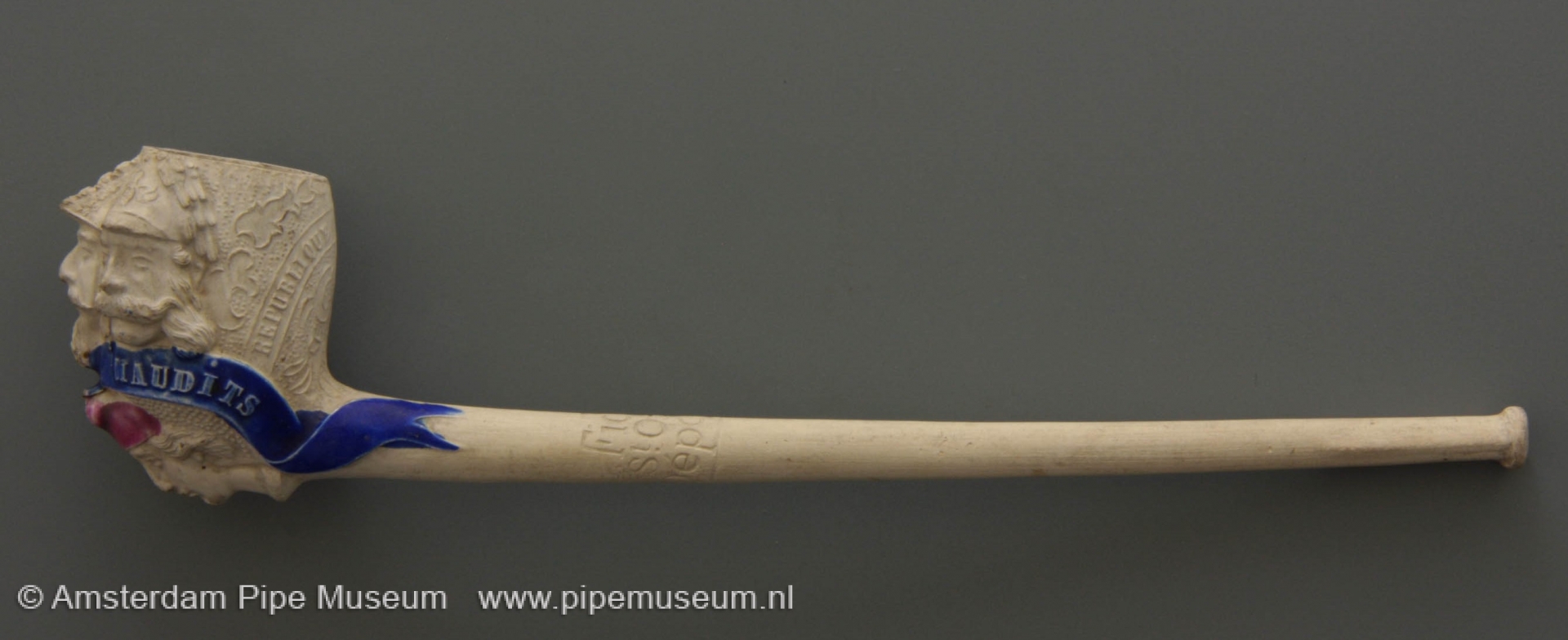
At the moment of production, shortly after 1872, this pipe was topical. The three political figures were the main characters in the French-German War of 1870. Bismarck was known at the time as the maliciously intriguing politician of Europe who drafted a so-called secret treaty with France. Not long after Prussia and especially Emperor Wilhelm I didn’t stand this appointments with the War of 1870 as a result. This ended in a flagrant defeat of France. The glorious march of the Germans into Paris was generally felt as a national humiliation and France lost Alsace-Lorraine. On top of that the French had to pay war damages to Germany for many years. No French citizen was sorry for Napoleon III when he was interred by the Prussians. Quite understandable the German president, nor the Kaiser, nor their own Emperor were very popular in France afterwards. With this pipe, depicting all the bad guys of that time, they mocked about them.
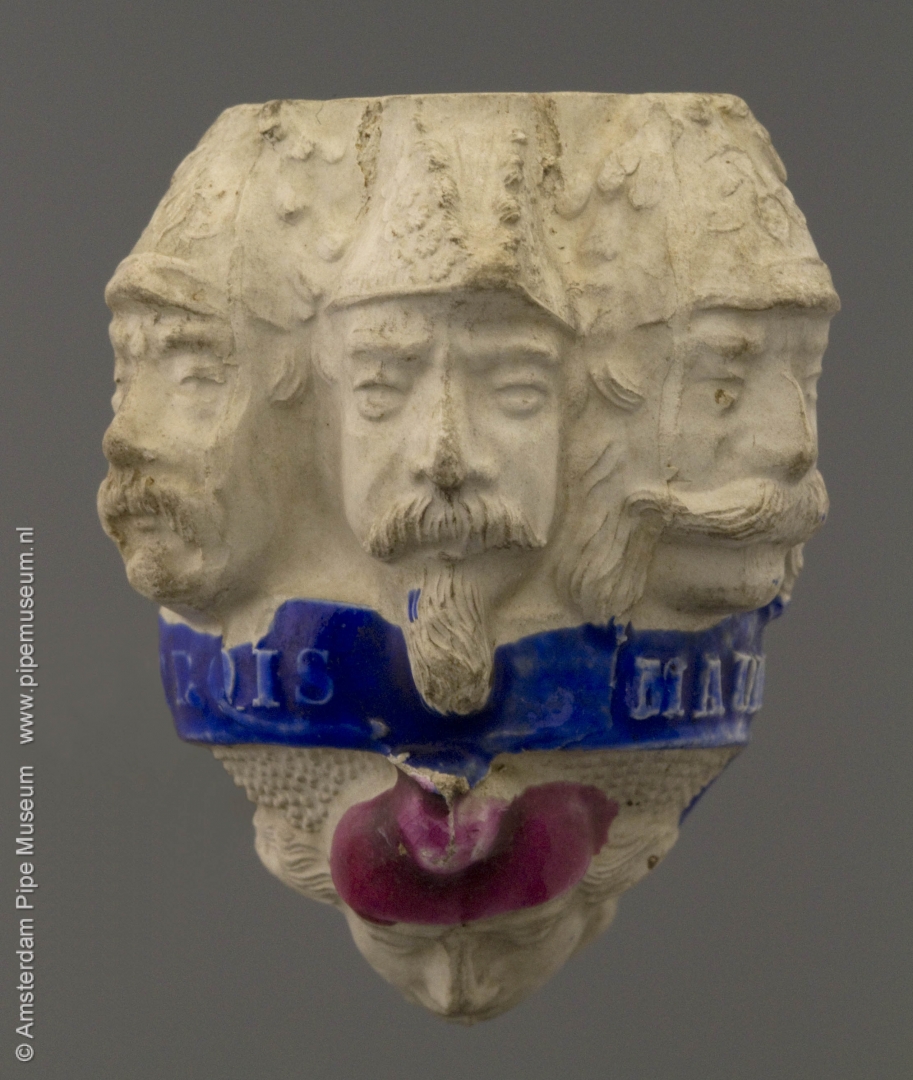
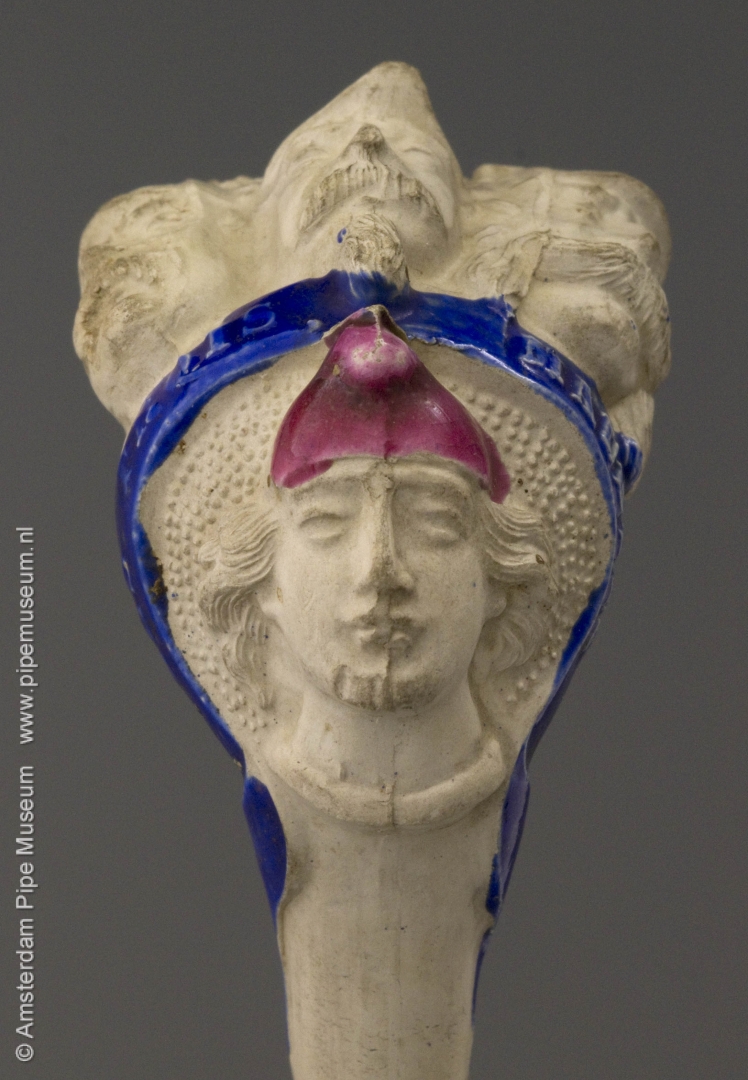
When Theodore Roosevelt acquired this pipe around 1900 the European policy was far away for the US. Even more the War of 1870 was over for decades, but laid in fact the foundation of the troubles leading to WWI. It might not be the political engagement of this pipe that attracted Roosevelt´s attention. Maybe his interest in clay pipes in general made him to buy this one. He had many other French clay pipes, that were the best on market at the time, with general representations in his modest collection.
Amsterdam, Pijpenkabinet collections Pk 19.272
A campaigning gadget
Compared with the first pipe of the famous Fiolet firm, this simple clay pipe is a modest mass product. The sculptural aspect is brought to the minimum, but for the good observer the design is much better than at first glance. The designer has made a standard pipe shape into a lifelike portrait with only minor adaptations – this is really a merit to mention.
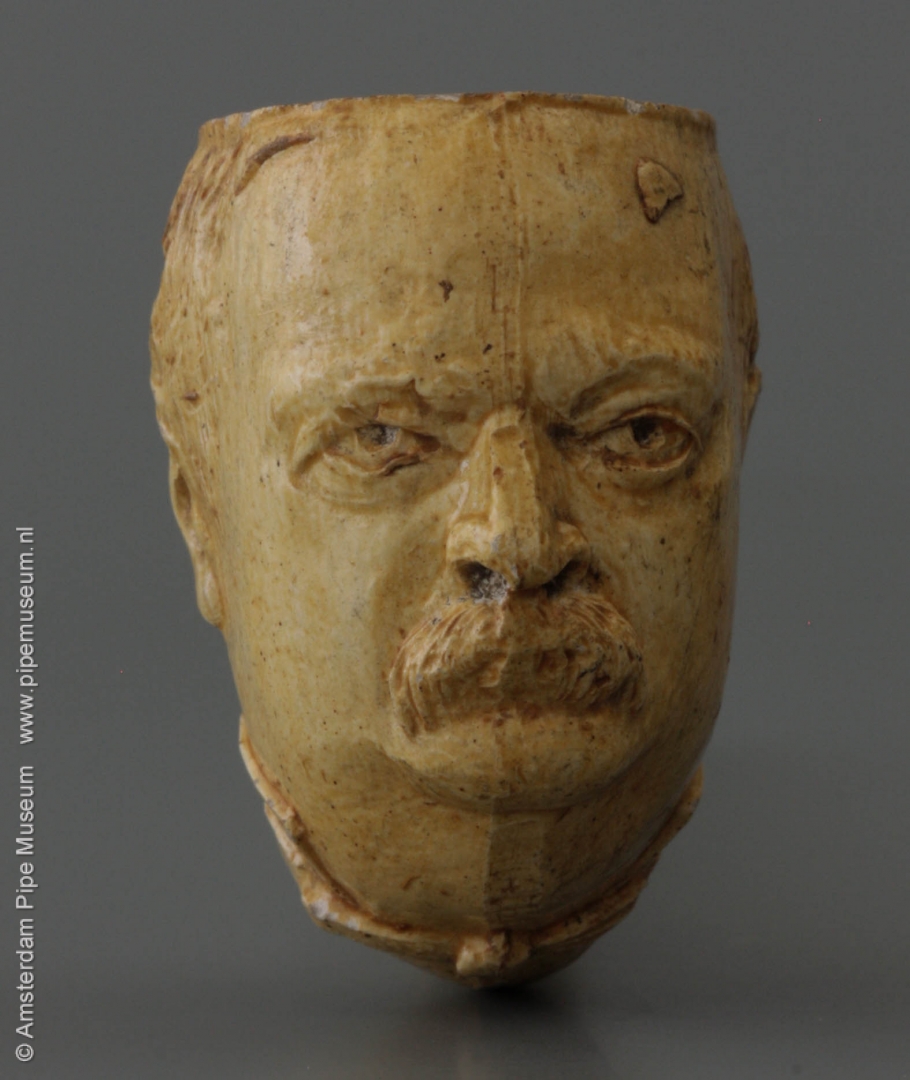
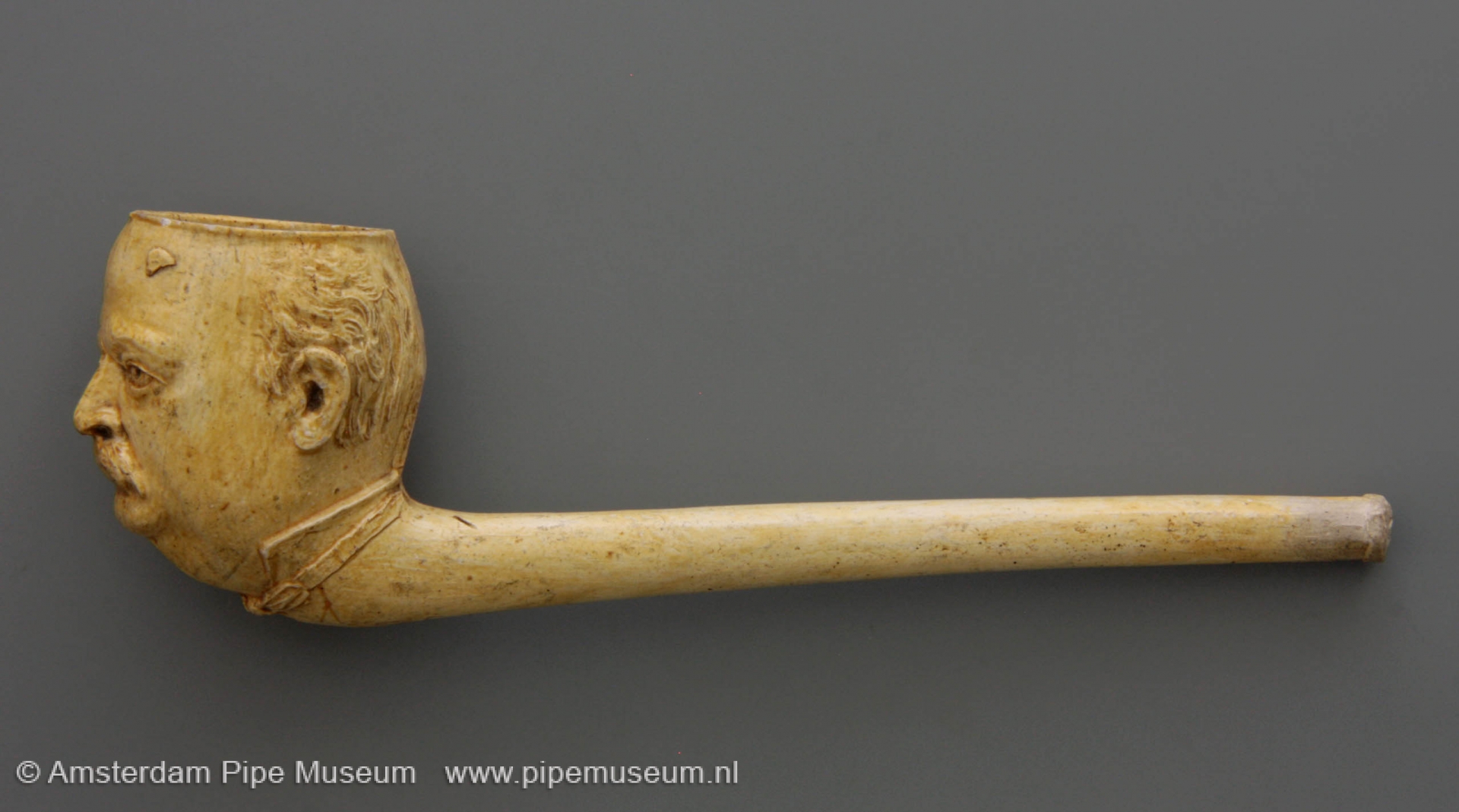
The portrayed is Stephen Grover Cleveland (1837-1908) twice elected president of the United States. He was in from 1885 to 1889 and from 1893 to 1897 which made him the only president who served two terms not directly in succession. His fans praised Cleveland for his honesty, independency, integrity and his classical liberalism. For Roosevelt this pipe mentioned more, being a sign for his recent predecessor, all be it with another political background. Had Roosevelt hoped to be immortalized once in such a pipe? Maybe, but certainly not in such a simple manner.
The pipe is made out of white baking clay and covered with a yellowish varnish. With this finish the product could resemble a luxurious meerschaum pipe. Such yellow varnished pipes were fashionable in Europe during the 1870’s and tended to vanish from the market afterwards. Apparently the fashion in America was somewhat later, let’s say 1885-1895. This pipe as a promotional gadget was meant for his voters during the campaign, or maybe popular among his people during his reign. Maker is Charles Kurth from Brooklyn, New York, so an American product in contrast to most presidentials that were produced in Europe.
Amsterdam, Pijpenkabinet collections Pk 19.289
Royal French figural
The last special pipe to mention is a stub stemmed pipe with a beautiful and strong design that would fit very well into a series of the best French pipes. It is a rather large pipe bowl in fresh white clay, that stands on a circular base. It represents a man’s portrait inspired on the famous sculpture of Napoleon, including his two pointed stitch and high decorated collar. A small rectangular shield identifies the man as: "MKINLEY".
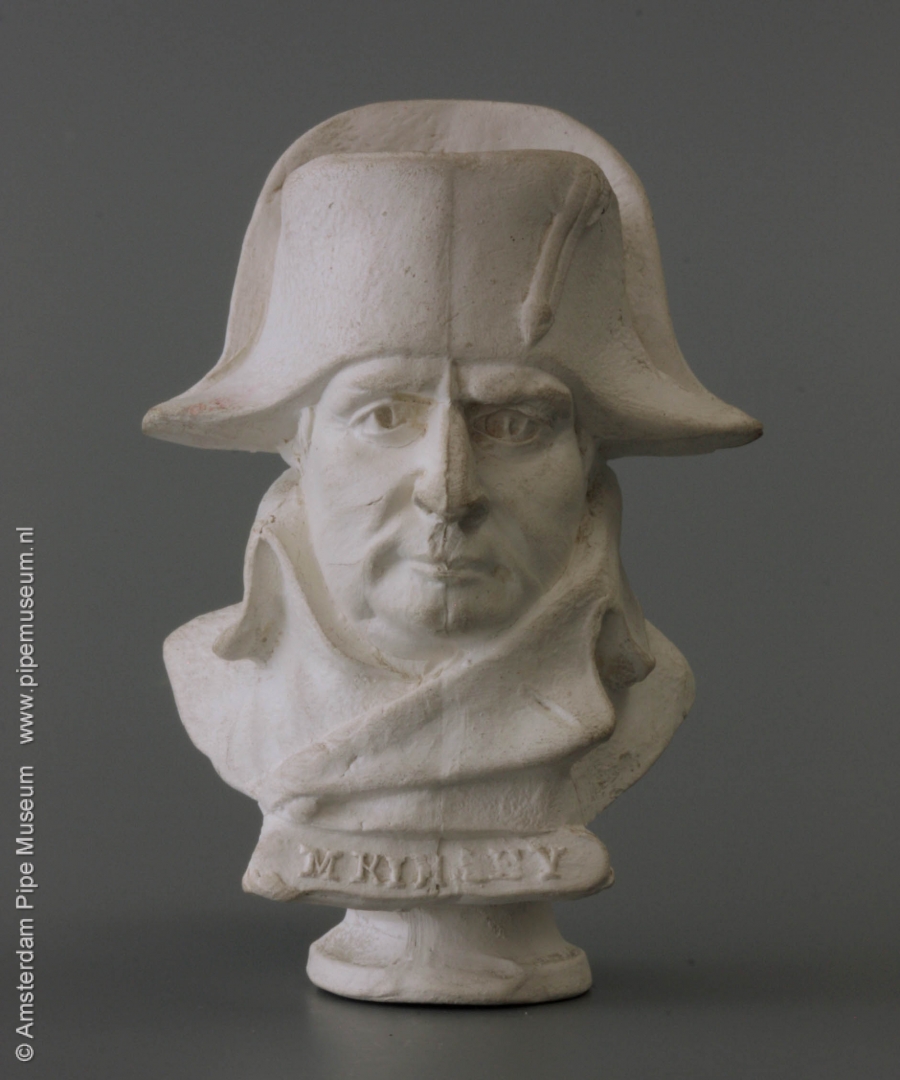
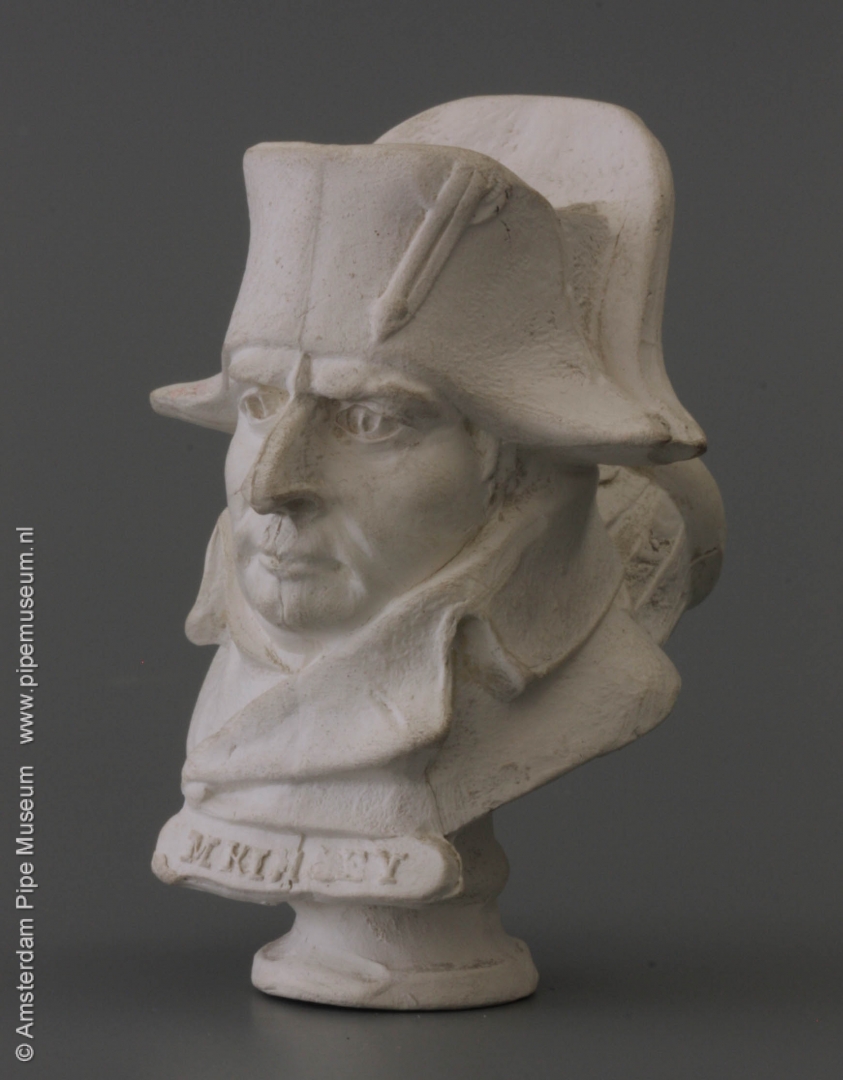
Represented is William McKinley (1843-1901), 25th president of the US, serving from 1897 to 1901. He was Republican and foremost known for his foreign policy. In 1900 he was chosen for his second term, but less than a year later he was murdered visiting the Pan-American Exhibition in Buffalo. He died September 1901 after being hospitalized for a week.
For Theodore Roosevelt this pipe will have had a special meaning. McKinley was his direct predecessor; Roosevelt was succeeding him within hours after his death. It is not certain whether his image in heroic style is made during the life of McKinley or only after his dramatic death. The latter seems to be more likely, putting McKinley in the row of illustrious statesmen. This pipe is, as the precedent, an American product, according to an unaffirmed source even from the same factory, although the style doesn’t match.
Amsterdam, Pijpenkabinet collections Pk 19.291
© Don Duco, Pijpenkabinet Foundation, Amsterdam – the Netherlands, 2008.